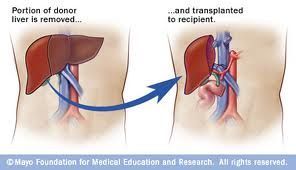Bioartificial liver using human cells developed by Chinese researches offers lesser chance of body rejection

Researchers from the Shanghai Institute for Biological Sciences and doctors from Nanjing Drum Tower Hospital have developed a new bioartificial liver. The use of the device saved a 61-year-old Chinese female patient who had acute liver failure.
It was the first clinical use of the bioartificial organ that uses human liver cells. It was attached outside the woman’s body, reports Xinhua News Agency. Although Chinese researchers have been using artificial livers since 1998, it was made from pig’s liver. The new device used cells from human skin, fat and other tissues that were reprogrammed into liver cells.
Professor Ding Yitao, member of the research team, notes, “It is safer and less likely to cause a rejection reaction.” The bioartificial liver would help keep a patent alive while waiting for a liver donor.
When lab animals were given new device by the Chinese, it has an average 80 percent chance of survival, while pigs with acute liver failure but not treated died within three days. The team, which shared the results of their study on the new issue of Cell Research, plans to do more clinical tests in Shanghai and nearby Chinese cities this 2016.
With an estimated 100 million Chinese suffering from hepatitis B and high incidence of liver cancer, more Chinese patients with liver ailments would have better chances for survival using the new device.
In India, where startup Pandorum Technologies successfully developed in late December 2015 an artificial 3D printed human liver tissue that mimics the organ’s function seamlessly, the breakthrough is expected to benefit Indians since India’s ratio of liver transplants to donor is 50:1.
In Australia, Transplant Australia data reports that in 2014, there were 237 liver transplants. It was the second highest among the six types of organ transplants listed, with the top being kidney transplants at 637 procedures. There are about 1,600 Aussies on the country’s transplant waiting list at any time, but Australia’s donation rate is 16.1 donors per million.





















